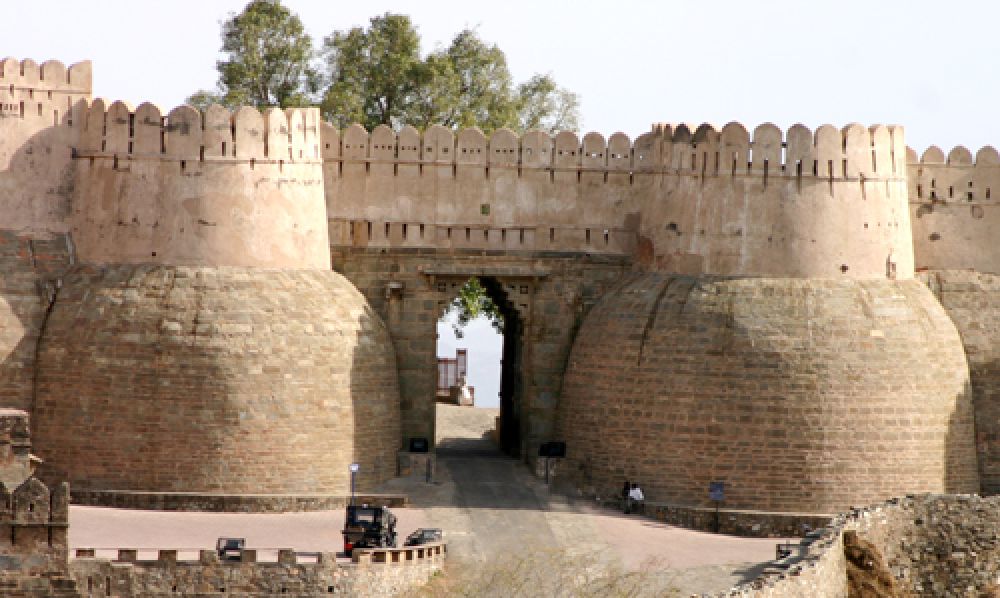

Kumbhalgarh, a Mewar fortress located in the Rajsamand district of Rajasthan, India, is famed for its majestic splendor and architectural magnificence. Ram Pol, one of the seven gates of Kumbhalgarh Fort, serves as a historical entryway into this UNESCO World Heritage Site. The history of tourism in Kumbhalgarh, and particularly at Ram Pol, is deeply intertwined with the fort's legacy.
Constructed during the 15th century by Rana Kumbha, Kumbhalgarh Fort stands as an epitome of Rajputana defense architecture. Ram Pol, which means 'Ram's Gate' in Hindi, is named after the Hindu deity Lord Ram and has stood witness to several battles and historical events over the centuries. This gate has been strategically important for the protection of the fort due to its complex structure and design which was intended to confuse the enemy.
The history of tourism at Kumbhalgarh Fort began to flourish when travelers started to recognize the value of Indian historical marvels. Initially visited by historians and architecture enthusiasts, it has now become a popular destination among tourists from across the globe who come to marvel at its grandeur.
In the early days, the fort attracted a limited number of visitors due to its remote location and the lack of infrastructure. However, with the increasing recognition of the fort's historical and cultural significance, tourism began to grow steadily. The Indian government and Rajasthan tourism authorities took steps to improve accessibility and facilities, making Kumbhalgarh and Ram Pol more tourist-friendly.
Today, tourists flock to Kumbhalgarh to explore its massive ramparts, which extend over 36 kilometers, making it one of the longest walls in the world, second only to the Great Wall of China. Ram Pol is especially significant as the main gateway to the fort, and it is common for visitors to take guided tours to understand the rich history and architecture of this gate.
Light and Sound Shows have been introduced in the evenings, depicting the fort's history, which has further attracted tourists. Additionally, annual festivals and events, such as the Kumbhalgarh Festival, add to the location's appeal, combining local culture, arts, and crafts to provide a memorable experience to visitors.
Eco-tourism has been on the rise, with visitors seeking to explore the neighboring Kumbhalgarh Wildlife Sanctuary. Moreover, adventure tourism has also gained momentum, with activities like trekking and horseback riding along the fort's walls.
Heritage stays have become increasingly popular, with tourists opting to stay in historic havelis and palaces converted into hotels, to immerse themselves in the regal lifestyle of Rajasthan's past rulers.
Overall, the historical appeal, coupled with the development of modern tourist facilities and a growing interest in both heritage and eco-tourism, has made Ram Pol, Kumbhalgarh, a symbol of Rajasthan's enduring legacy and a shining example of India's rich tapestry of historical attractions.